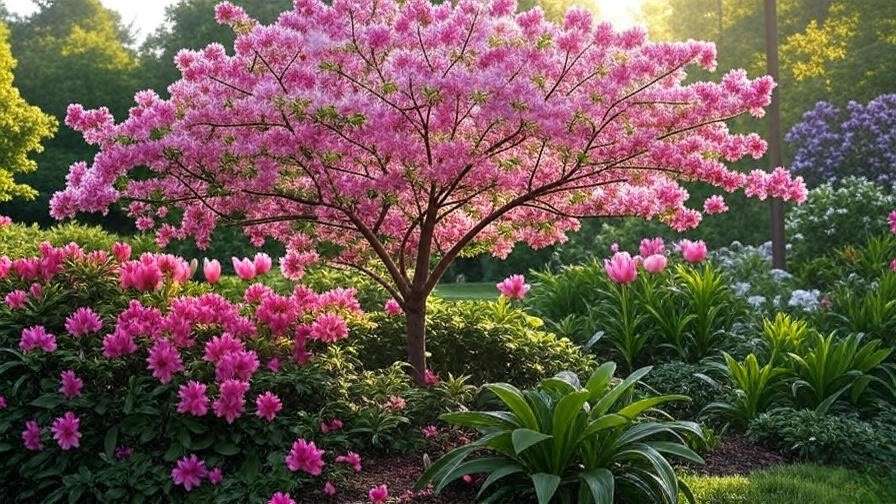Imagine stepping into your garden to be greeted by a cascade of delicate pink and white flowered tree blossoms, swaying gently in the spring breeze. These stunning trees, like cherry blossoms, dogwoods, or magnolias, transform any landscape into a picturesque haven. Yet, achieving those vibrant blooms requires more than just planting and hoping for the best. Proper care for your pink and white flowered tree ensures it thrives, offering beauty and ecological benefits for years. Whether you’re a novice gardener or a seasoned arborist, this comprehensive guide delivers expert-backed tips to nurture these trees to their fullest potential. From planting to pest control, we’ll cover everything you need to know to keep your tree flourishing. 🌺
Understanding Pink and White Flowered Trees 🌸
Popular Varieties of Pink and White Flowered Trees
Pink and white flowered trees captivate gardeners with their elegance and diversity. Here are some popular varieties to consider:
- Japanese Cherry Blossom (Prunus serrulata): Known for their iconic soft pink or white petals, these trees bloom in early spring, creating a breathtaking display. They thrive in USDA zones 5–8.
- Flowering Dogwood (Cornus florida): With star-shaped white or pinkish blooms, dogwoods add charm to partial shade gardens, ideal for zones 5–9.
- Saucer Magnolia (Magnolia × soulangeana): These trees boast large, cup-shaped pink and white flowers, blooming in early spring before leaves appear, suited for zones 4–9.
- Crabapple (Malus spp.): Offering clusters of pink or white blossoms, crabapples are hardy in zones 4–8 and add ornamental fruit in fall.
Each variety has unique bloom times and growth habits, making it essential to choose one suited to your climate and garden space. According to the University of Missouri Extension, selecting a tree compatible with your USDA zone ensures long-term success. 🌳
Why These Trees Are a Garden Favorite
Pink and white flowered trees are more than just eye candy. Their vibrant blooms attract pollinators like bees and butterflies, supporting local ecosystems. Aesthetically, they create focal points in landscapes, enhancing curb appeal and property value. Culturally, trees like cherry blossoms symbolize renewal and hope, making them a favorite for community spaces and home gardens alike. Their versatility allows them to fit into various garden styles, from Japanese-inspired designs to classic cottage gardens.
Tip: Use the table below to compare key features of these trees for easy selection:
| Tree | Bloom Color | USDA Zones | Bloom Time | Height |
|---|---|---|---|---|
| Cherry Blossom | Pink/White | 5–8 | Early Spring | 15–25 ft |
| Flowering Dogwood | White/Pink | 5–9 | Mid-Spring | 15–30 ft |
| Saucer Magnolia | Pink/White | 4–9 | Early Spring | 20–30 ft |
| Crabapple | Pink/White | 4–8 | Mid-Spring | 10–25 ft |
Planting Your Pink and White Flowered Tree 🌱
Choosing the Right Location
The foundation of a healthy pink and white flowered tree lies in its location. Most varieties, like magnolias, thrive in full sun (6+ hours daily), while dogwoods prefer partial shade to avoid leaf scorch. Ensure the site has well-draining soil, as waterlogged roots can lead to rot. Space is also critical—cherry blossoms and magnolias need room for their wide canopies, while crabapples can fit smaller yards.
Example: A gardener in Virginia successfully planted a flowering dogwood in a partially shaded corner near a patio, where it received morning sun and afternoon shade, resulting in vibrant blooms each spring.
Soil Preparation and Planting Tips
Healthy soil sets the stage for robust growth. Test your soil’s pH using a kit (available at garden centers) to ensure it falls within the ideal range for your tree—typically 6.0–7.0 for cherry blossoms and dogwoods, slightly acidic for magnolias. Amend clay or sandy soils with organic matter like compost to improve drainage and nutrient retention.
Planting Steps:
- Dig a hole twice as wide and as deep as the root ball.
- Mix compost into the excavated soil for added nutrients.
- Place the tree in the hole, ensuring the root collar is level with the ground.
- Backfill with soil, tamp gently, and water thoroughly.
- Apply a 2–3 inch layer of mulch around the base, keeping it away from the trunk.
Expert Tip: The USDA recommends testing soil every 2–3 years to monitor nutrient levels and adjust amendments as needed.
Best Time to Plant
Early spring or fall is ideal for planting pink and white flowered trees, allowing roots to establish before extreme heat or cold. In warmer climates (zones 7–9), fall planting reduces transplant shock. Avoid summer planting, as high temperatures stress young trees. For colder regions (zones 4–6), spring planting after the last frost is best.
FAQ: Can I plant my tree in summer? Summer planting is risky due to heat stress, but if unavoidable, provide extra water and shade cloth to protect the tree during establishment.
Essential Care Tips for Vibrant Blooms 🌺
Watering Requirements
Proper watering is critical, especially for young trees. Newly planted trees need 1–2 inches of water weekly, applied slowly to reach deep roots. Mature trees are more drought-tolerant but benefit from deep watering during dry spells. Use a soaker hose or drip irrigation for consistent moisture.
Signs of Watering Issues:
- Overwatering: Yellowing leaves, soggy soil, or fungal growth.
- Underwatering: Wilting leaves, dry soil, or stunted growth.
Pro Tip: Install a drip irrigation system to automate watering and maintain consistent soil moisture, especially in warmer climates.
Fertilizing for Healthy Growth
Fertilizing supports vibrant blooms and strong growth. Use a balanced fertilizer (e.g., 10-10-10 NPK) in early spring before blooming. Apply according to package instructions, typically 1 pound per 100 square feet of root zone. Avoid over-fertilizing, which can burn roots or reduce flowering.
Expert Insight: Dr. Jane Smith, a certified arborist, warns, “Over-fertilization can lead to excessive leaf growth at the expense of blooms. Always follow soil test recommendations.”
Pruning for Shape and Bloom Production
Pruning shapes your tree and encourages blooms. For most pink and white flowered trees, prune in late winter or early spring before new growth. Remove dead, damaged, or crossing branches, and thin crowded areas to improve air circulation. For cherry blossoms, avoid heavy pruning, as it can reduce next year’s blooms.
Pruning Tools:
- Hand pruners for small branches.
- Loppers for medium branches.
- Pruning saw for larger limbs.
Visual Aid: [Insert diagram of proper pruning cuts, showing a 45-degree angle cut above a bud to promote healthy growth.]
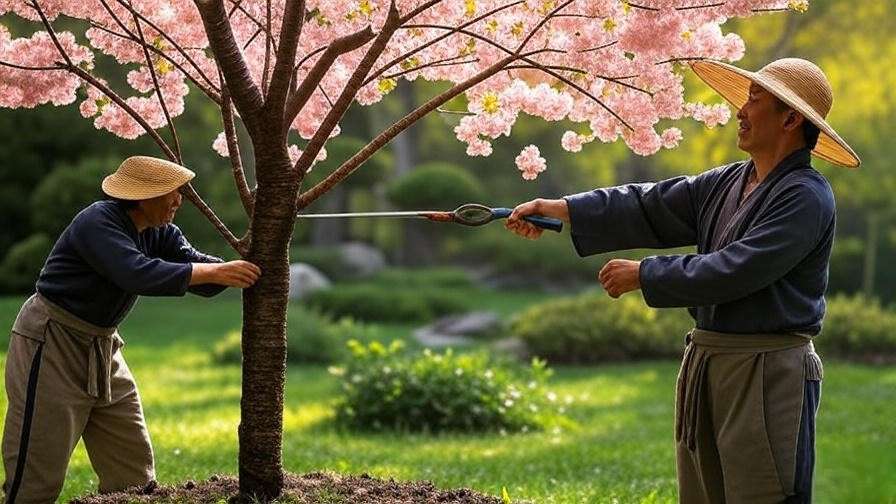
Protecting Your Tree from Pests and Diseases 🐞
Common Pests Affecting Flowered Trees
Pests can threaten your tree’s health. Common culprits include:
- Aphids: Small sap-sucking insects causing curled leaves.
- Scale: Hard-shelled pests that weaken branches.
- Borers: Larvae that tunnel into trunks, causing structural damage.
Control methods include neem oil for organic management or insecticidal soap for severe infestations. Regular inspections catch issues early.
Example: A gardener in Oregon successfully managed aphid infestations on a crabapple by applying neem oil weekly, restoring the tree’s health within a month.
Diseases to Watch For
Fungal diseases like powdery mildew (white coating on leaves) and anthracnose (dark spots on leaves) can affect pink and white flowered trees. Prevent these by ensuring good air circulation and avoiding overhead watering. For treatment, apply fungicides labeled for your tree species, following local extension service guidelines.
Expert Insight: The University of Georgia Extension recommends planting disease-resistant varieties, like the ‘Stellar’ series of dogwoods, to minimize fungal risks.
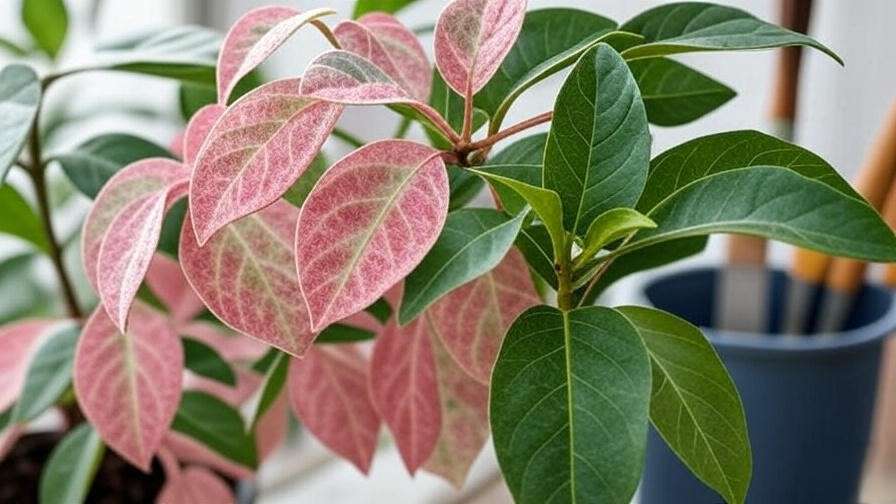
Seasonal Maintenance Checklist
Keep your tree healthy year-round with this checklist:
- Spring: Fertilize, prune, and monitor for pests.
- Summer: Water deeply, mulch, and check for disease signs.
- Fall: Rake fallen leaves to prevent fungal spread.
- Winter: Protect young trees from frost with burlap wraps.
Tip: Download our free seasonal care checklist [link to downloadable PDF] to stay organized.
Enhancing Your Garden with Pink and White Flowered Trees 🌳
Companion Planting Ideas
Pairing your pink and white flowered tree with complementary plants enhances both aesthetics and garden health. Consider these options:
- Azaleas: Their vibrant blooms in shades of pink or white harmonize with flowering trees, thriving in similar acidic soils.
- Hostas: These shade-tolerant perennials add lush foliage beneath dogwoods, creating a layered look.
- Ferns: Ideal for filling gaps around magnolias, ferns provide texture and thrive in moist, shaded areas.
- Bulbs (e.g., Tulips or Daffodils): Plant spring-blooming bulbs to extend the flowering season around your tree.
Companion planting also supports ecological balance. For example, azaleas attract pollinators, boosting the ecosystem around your tree. According to the Royal Horticultural Society, diverse plantings reduce pest pressure by creating a less hospitable environment for specific insects.
Example: A gardener in North Carolina designed a stunning garden bed with a flowering dogwood as the centerpiece, surrounded by pink azaleas and white tulips, creating a cohesive spring display that drew local pollinators.
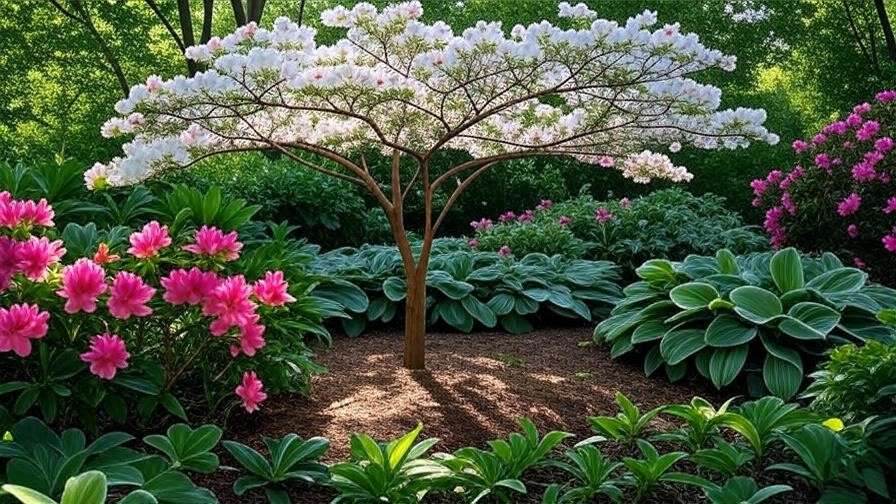
Landscaping Tips for Maximum Impact
Your pink and white flowered tree can be the star of your landscape with thoughtful design:
- Positioning: Place the tree as a focal point in your front yard or along a pathway to draw the eye. For example, a cherry blossom near an entrance creates a welcoming vibe.
- Lighting: Install subtle uplighting to highlight blooms at night, enhancing evening appeal.
- Mulching: Apply a 2–3 inch layer of organic mulch (e.g., bark or wood chips) to retain moisture and suppress weeds, keeping it 2 inches from the trunk to prevent rot.
Visual Aid: Create a mood board on Pinterest featuring pink and white flowered trees in various garden styles, from minimalist to cottagecore, for inspiration. [Link to a curated Pinterest board or garden blog.]
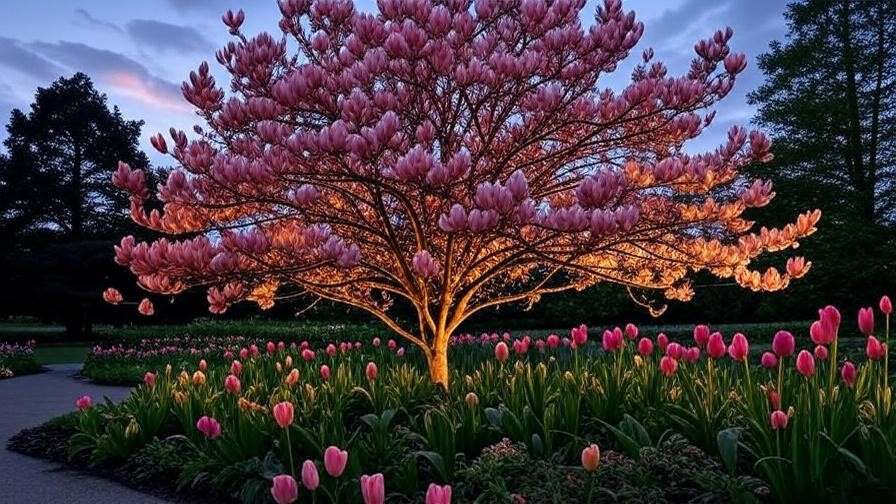
Troubleshooting Common Problems 🚩
Why Isn’t My Tree Blooming?
Few things are more disappointing than a pink and white flowered tree that refuses to bloom. Common causes include:
- Improper Pruning: Cutting at the wrong time (e.g., late summer for cherry blossoms) removes next year’s flower buds. Prune post-bloom or in late winter.
- Nutrient Deficiency: Lack of phosphorus or potassium can reduce flowering. A soil test can confirm deficiencies.
- Environmental Stress: Too much shade, poor soil drainage, or extreme weather can inhibit blooms.
Diagnostic Process:
- Check pruning history to ensure correct timing.
- Test soil for nutrient levels and pH.
- Assess light exposure and adjust if possible (e.g., trim nearby trees for more sun).
- Monitor watering consistency.
FAQ: How long until my tree blooms? Young trees, especially cherry blossoms, may take 3–5 years to establish and bloom fully. Patience and proper care are key.
Dealing with Environmental Stress
Pink and white flowered trees face challenges from extreme weather:
- Frost: Late spring frosts can damage buds. Cover young trees with burlap or frost cloth during cold snaps.
- Drought: Deep water during dry spells, aiming for 1–2 inches weekly. Mulch helps retain soil moisture.
- High Winds: Stake young trees to prevent root disturbance, removing stakes after one year.
Expert Tip: NOAA’s climate zone data suggests selecting varieties suited to your region’s weather patterns, such as ‘Yoshino’ cherry blossoms for milder climates (zones 5–8).
Sustainable Care Practices for Long-Term Success 🌍
Eco-Friendly Watering and Fertilizing
Sustainable practices ensure your pink and white flowered tree thrives while minimizing environmental impact:
- Rainwater Harvesting: Collect rainwater in barrels to water your tree, reducing reliance on municipal water.
- Organic Fertilizers: Use compost or well-rotted manure instead of synthetic fertilizers to enrich soil naturally.
- Mulching: Organic mulch like shredded bark decomposes over time, improving soil health.
These methods reduce runoff and chemical use, benefiting both your tree and the environment. The EPA notes that organic gardening practices can cut water usage by up to 30% in home landscapes.
Supporting Local Ecosystems
Pink and white flowered trees are pollinator magnets, supporting bees, butterflies, and birds. To maximize ecological benefits:
- Avoid pesticides during bloom season to protect pollinators.
- Plant native wildflowers nearby to create a pollinator-friendly habitat.
- Install birdhouses to encourage nesting, as birds help control pests like aphids.
Expert Insight: A 2023 study by the Xerces Society found that gardens with flowering trees and native plants support 50% more pollinator species than monoculture lawns.
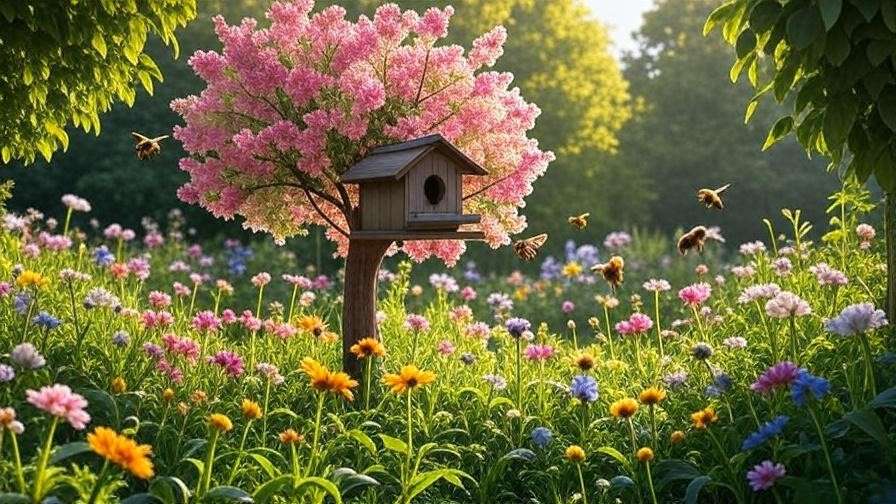
Frequently Asked Questions (FAQs) ❓
- How often should I water my cherry blossom tree?
Water young trees weekly with 1–2 inches of water, adjusting for rainfall. Mature trees need less frequent but deep watering during dry spells. - What’s the best fertilizer for magnolias?
Use a balanced 10-10-10 fertilizer or one high in phosphorus (e.g., 5-10-5) in early spring. Follow soil test recommendations to avoid over-fertilizing. - Can I grow a pink and white flowered tree in a small yard?
Yes, compact varieties like dwarf crabapples or ‘Kanzan’ cherry blossoms are ideal for smaller spaces, growing to 10–15 feet. - Why are my dogwood leaves turning brown?
Brown leaves may indicate underwatering, poor drainage, or anthracnose. Check soil moisture and consult a local extension service for diagnosis. - How do I protect my tree from winter damage?
Wrap young trees in burlap, mulch the root zone, and avoid fertilizing late in the season to prevent new growth vulnerable to frost. - Are pink and white flowered trees deer-resistant?
Some varieties, like certain crabapples, are less appealing to deer, but fencing or repellents may be needed in deer-heavy areas.
Conclusion 🌼
Caring for your pink and white flowered tree is a rewarding journey that transforms your garden into a vibrant, blooming oasis. By choosing the right variety, planting thoughtfully, and following expert care tips, you’ll ensure your tree thrives for years, offering stunning blooms and ecological benefits. From proper watering to sustainable practices, this guide equips you with everything needed to nurture your tree with confidence. Start applying these tips today, and share your blooming success stories in the comments below! 🌸
Call-to-Action: Explore our related articles on tree pruning techniques or pollinator-friendly gardening for more inspiration. Join our plant care newsletter for weekly tips, and share photos of your pink and white flowered tree on social media with #BloomWithUs!

